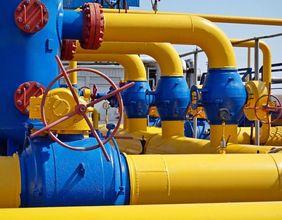Industrial fires involving transformers, batteries, and light ballasts pose serious risks, not just during the event but also long after the flames are extinguished. These fires release hazardous substances, damage property, and disrupt operations. While prevention is crucial, it’s equally important to address the often-overlooked challenge of cleanup and remediation following such incidents.
Understanding the Hazards of Transformer, Battery, and Light Ballast Fires
Fires involving these components can leave behind more than just physical damage:
- Transformers may release harmful polychlorinated biphenyls (PCBs), hydrocarbons, and other toxic residues, especially if they are older models.
- Batteries, particularly lithium-ion and lead-acid types, can leak dangerous chemicals such as sulfuric acid or lithium compounds, which pose risks to both human health and the environment.
- Light ballasts, especially pre-1979 models, may contain PCBs or other hazardous materials, creating a toxic cleanup scenario.
These materials can contaminate soil, water, and air, complicating cleanup efforts and requiring specialized expertise to manage safely and efficiently.
The Complexity of Post-Fire Cleanup and Remediation
If your business relies on transformers, batteries, or light ballasts, understanding the post-fire challenges is essential to ensure safety, compliance, and business continuity. Here are the key factors to consider:
1. Hazard Identification
The first step is identifying the specific hazards left behind. Fire residues can include:
- Acid leaks from lead-acid batteries that corrode surfaces and create unsafe working conditions.
- Thermal damage to lithium-ion batteries, which can release flammable gases or reignite if improperly handled.
- PCB contamination from transformers and light ballasts, requiring specialized handling and disposal processes.
Conducting a thorough environmental assessment is essential to pinpoint contamination levels and determine the appropriate response.
2. Specialized Waste Management
The hazardous nature of fire byproducts often mandates strict compliance with environmental regulations for disposal. For example:
- Acid-neutralizing agents may be required to safely clean up lead-acid battery spills.
- Damaged lithium-ion batteries must be stored and transported in accordance with fire safety guidelines to prevent further incidents.
- PCB-contaminated materials must be removed by certified professionals and disposed of at authorized facilities.
Failure to adhere to these standards can result in regulatory penalties and increased liability.
3. Environmental and Operational Impact
Fires can significantly affect surrounding environments:
- Leaking chemicals can contaminate groundwater or local ecosystems, requiring long-term monitoring and remediation.
- Airborne particulates and toxic gases may require indoor air quality assessments and ventilation system cleaning.
For businesses, these impacts can delay reopening, prolong downtime, and erode customer trust.
4. Worker and Community Safety
Post-fire environments often remain hazardous for workers and nearby communities. Proper personal protective equipment (PPE), detailed safety protocols, and clear communication plans are necessary to ensure safety during cleanup operations.
Steps to Effective Post-Fire Management
To mitigate the long-term effects of transformers, battery, and light ballast fires, businesses should implement a structured approach to cleanup and remediation:
- Engage Incident Management Experts: Specialists can assess the scene, identify hazards, and create a tailored remediation plan to ensure regulatory compliance and worker safety.
- Develop a Cleanup Strategy: This includes waste categorization, decontamination protocols, and the safe removal and disposal of damaged components.
- Restore Operations Safely: Conduct air quality testing, infrastructure assessments, and equipment replacements to ensure a safe and efficient return to business.
- Monitor for Residual Impact: Implement long-term monitoring programs to detect any delayed environmental or operational effects.
The Road to Effective Recovery
Fires involving transformers, batteries, and light ballasts create complex challenges that extend far beyond the immediate event. Understanding the hazards, addressing them safely, and planning for long-term recovery are critical steps to minimizing the impact on your business and the environment. By taking a structured, informed approach to cleanup and remediation, companies can ensure a safer and more sustainable recovery process, protecting their employees, assets, and community for the future.
Navigating these complexities can be daunting, but partnering with experienced incident management professionals can make all the difference. Reach out to our Incident Management (AIM) team today!





